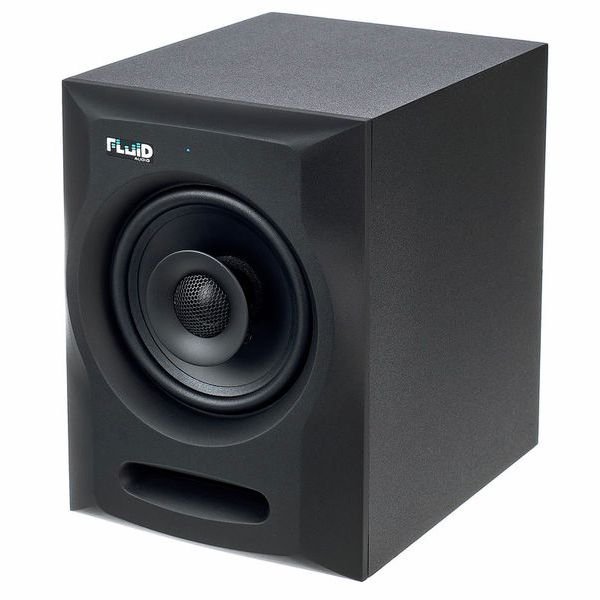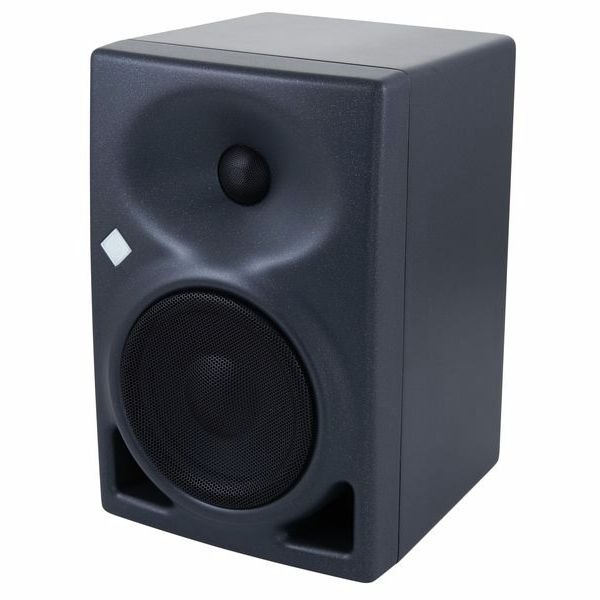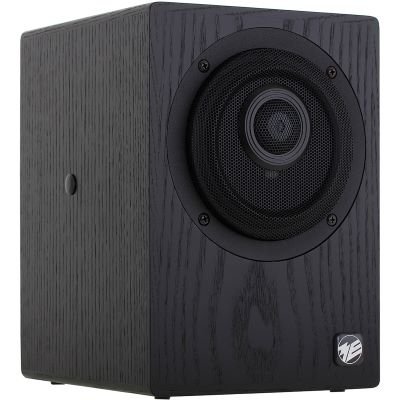Hello.
This website pursues the unexpected undertaking of the classical guitarist, from the practice room to performance hall, and the studio.
I hope that you’ll find the content useful!

This website pursues the unexpected undertaking of the classical guitarist, from the practice room to performance hall, and the studio.
I hope that you’ll find the content useful!
If you need help on choosing an audio interface, check out my Best Audio Interfaces for Classical Guitar guide.
Nearfield monitors are essential tools for music producers and engineers as they allow them to make reliable decisions regarding microphone positioning and post-processing. Therefore if you aspire to record and release your music, a pair of decent monitors should be on your priority list.
A discussion about studio monitors might not be the most exciting topic for most classical guitarists. But, arguably, listening to music through a decent pair of speakers can be a transformative experience; thus, it may be one of our most significant gear purchases. Undoubtedly it played a vital role for me some 20 years ago when I updated my computer speakers to "proper" studio monitors, and recorded music obtained depth and physicality previously unknown to me.
It's not that I didn't have access to good hi-fi speakers before this moment, besides attending concerts where the interaction of the performer and audience can be transcending. However, having a daily relation to unflattered and detailed playback of my favourite recordings gradually, yet fundamentally, altered my perception.
Unless you are working in a large room or have invested in professional acoustic treatment, a 5" woofer will give you a better picture of what really happens on the frequencies that are important for the classical guitar. Besides, larger monitors of comparable quality cost significantly more, so with smaller monitors, you would get better sound and craftsmanship in comparison. You could always use headphones to check the low end if you also need to work occasionally on larger projects.
Therefore this list consists solidly of smaller active nearfield monitors.
Get the highest quality studio monitors you can afford.
Not only is there a is significant quality difference between budget and higher-end models, but you also need to familiarise yourself with any speaker. So, you need to stay with the same monitors for years and spend as much time with them as possible.
There is a myth that good studio monitors offer a flat frequency response, and this might be somewhat true in that most hi-fi or audiophile speakers are way too coloured in comparison. However, even if they are usually advertised as flat studio monitors, every brand and every design has a distinct sound. Therefore, searching for the flattest or truest studio monitor design in existence is a superfluous activity.
Good studio monitors present all the information you need to make critical tonal decisions for your music/mix. Some can be more analytical, while others can be more engaging. Generaly, higher end monitors have lower distortion, more coherent phase response and accurate stereo imaging. Regardless the monitors you have, use them daily, even for casual listening, to tune with them and understand how they respond.
Your monitors should be at ear level, so either monitor stands or even a stack of books are necessary accessories. Your seating position and the monitors should create a triangle. Depending on the room, the listening distance should be about 0,5-1,5m. Lastly, I like to have the monitors pointing slightly outwards for less ear fatigue and a more natural response.
In every price range, there are at least two options; one is more analytic, the other is more engaging. Pick your poison.
If you need more assistance, don't hesitate to contact me.


Fluid Audio FX50
The best entry-level studio monitor on the market today is the Fluid Audio FX50. They sport a coaxial speaker design that provides an excellent stereo image for the price while being quite revealing and relatively honest. Their only downside is that they need careful placement as the sweet spot is too narrow, and they can be a bit noisy, but so is everything at this price range.
Alternative - if a more traditional 2-way design with the tweeter separate from the woofer is more to your taste, the JBL 305P MKII offers excellent value for the money. They have a decent amount of low-end and can be a touch more engaging to listen to than the Fluid Audio FX50. On the negative, they are slightly noisier and feel a bit more flimsily made.

Kali Audio IN-5
The Kali Audio IN-5 is a three-way monitor with a clear, neutral response and powerful low frequencies. The coaxial midrange and tweeter create an expansive sound stage and depth. Their EQ adjustability with the dip switches can be handy for setting up the best sound in your room. The construction can be a bit plasticky, but for their performance in this price range, it is hard to complain.

Dynaudio LYD-5
Alternative - if aesthetics are as decisive to you as tonality, you can't overlook the Focal Shape 40. Despite the 4" woofer, they provide plenty of low-end and offer excellent clarity with low distortion. The Shape 40 is ideal for small rooms as they are small and lack a bass port; thus placing them close to the wall will not be an issue. The build is excellent, and the curved wooden front block looks elegant. They have a slight low-mid dip in favour of the low-end, and their depth is not as impressive as the Kali's.
Alternative - if you prefer a 5" woofer, you can't go wrong with the Dynaudio LYD-5. The small Dynaudio's are both visually and sonically very refined monitors. They have presets for free or wall-mounted installation and a tilt for setting their frequency response to your preference, from dark to bright. The LYD-5 can be more laid-back than the Focal's or the Kali's and have a slightly higher noise floor.
As with interfaces, things start to become interesting in this category.

Neumann KH 120
The Neumann KH 120 is a competent performer for enthusiast and professional use with an impressive spatial rendition. Unlike its smaller sibling (read my review of the KH 80), the KH 120's case is made with solid aluminium and has a high-quality feel and craftsmanship. The lows are deep and tight, while the mids are precise. The hights are detailed while remaining free from any trace of harshness. The Neumann's are relatively fatigue-free, making them suitable for long sessions.
Alternative - the Focal Shape 50 portray the music beautifully and has an exquisite stereo balance and depth. Their sound signature is warm and natural, and generally they translate well. The Focal's craftsmanship is first-rate, besides looking very chic. Lastly, they are fatigue-free and have a low noise floor.

PSI A14m
One would think that the law of diminishing returns takes action at this price range, but that's far from the truth. There is a measurable difference between the following options and sub-1000 dollar monitors.
The PSI A14m is the ideal small studio monitor for classical guitar, as it has an almost perfect phase response achieved an all-analogue circuit. The monitors impress with their extremely natural tonality and extraordinary speed. The A14m's are brutally honest and have one of the most precise stereo imaging I have experienced in nearfield speakers. PSI's craftsmanship is at the highest level, and everything, including the speaker cones, is being built in-house. There is nothing to complain about them, other than the metallic red colour, which is a matter of taste. I kind of like it!

Geithain RL 906
Alternative - The Geithain RL 906 is a truly phenomenal speaker with a coaxial design that provides an almost holographic sound and remarkable spatial delivery. Their unique top-facing ports allow them to be used in very tight spaces, but at the expense of some low-end. The slightly leaner sound shouldn't scare you as they don't hide any information; contrary, they offer a unique but honest experience. They are not as accurate as the PSI as they impose their own slightly more silky sound. The overal presentation favours stage over tonality. Fit and finish are as good as it gets, and there is a selection of veneers to choose from (at an additional cost) if you have an exotic taste.

Here are some monitors that didn't make it to my recommendations.
The Neumann KH 80 is a decent, if not a bit boring, sounding monitor. As I wrote in my review, it feels more like an oversized computer speaker than a serious studio monitor. So, unless portability is a concern, the KH 120 is a better and bigger-sounding monitor for not much more money.
A popular monitor with a unique design due to the ribbon tweeter is the Adam A4V, which may sound impressive at first with its analytical sound, but can get tiresome quickly. It can also be a pain to mix classical guitar with all the fretting and other mechanical noises of the instrument that the Adam's emphasise.
The KS Digital C5-Reference is another coaxial design with impressive imaging and depth, but the frequency response is a bit hi-fi oriented. It sounds relatively thin and empty, and thus it is very difficult to make tonal judgments.
- Best Microphones for Classical Guitar
- Best Audio Interfaces for Classical Guitar
- Best Studio Monitors for Classical Guitar
Managing Classical Guitar Tones is costly; hosting, shipping gear, time, etc. Help this site stay alive and allow me to create more content like this.